How to Snatch Grip Deadlift – Benefits, Muscles Worked and Variations
This complete guide to the Snatch Grip Deadlift will teach you everything you need to know about this useful and unique exercise.
What is the Snatch Grip Deadlift?
The Snatch Grip Deadlift is a variation of the tradition Deadlift that incorporates a wider grip borrowed from the Snatch lift from Olympic Weightlifting.
A significantly wider grip is utilised which changes the stimulus and challenge of the exercise.
The lifter must crouch down further and lift the bar higher. The Snatch Grip gives the overall Deadlift a greater range of motion.
- What is the Snatch Grip Deadlift?
- What Muscles Does the Snatch Grip Deadlift Work?
- What are the Benefits of the Snatch Grip Deadlift?
- How to Do the Snatch Grip Deadlift
- Snatch Grip Deadlift Training Tips
- Why is the Snatch Grip Deadlift Harder?
- Common Snatch Grip Deadlift Mistakes
- Who Should do Snatch Grip Deadlifts?
- How to Program the Snatch Grip Deadlift
- Snatch-Grip Deadlift Alternatives
- Snatch Grip Deadlift Variations
- FAQs
- Learn More
What Muscles Does the Snatch Grip Deadlift Work?
The movement works many of the same muscle groups as the traditional Deadlift, with the main emphasis being placed on the glutes, hamstrings and core.
Hamstrings and Glutes
The hamstrings and glutes power the majority of the exercise.
There is a large amount of hip extension required to lift the barbell from the floor to the full standing position.
Quads
The quads have to work even harder during this variation because of the lower starting position.
Lats, Traps and Rhomboids
The wide grip places a lot of tension on the lats, traps and rhomboids. It will stress and test them in great new ways that will significantly improve your back strength.

Core and lower back
Any type of Deadlift is a sure-fire way to enhance your core strength. The Snatch Grip is no exception.
From the spinal erectors to the abs, this movement makes your core work hard to establish and maintain a straight spine and excellent posture throughout the full range of motion.
Grip and Forearm
The wider hand positioning makes the barbell harder to grip than the regular version.
This alteration is an effective way to strengthen both your grip and forearm strength by challenging them in a new way.
What are the Benefits of the Snatch Grip Deadlift?
The Snatch Grip Deadlift has many great benefits.
Build Full Body Strength
Like any Deadlift, it is a perfect tool for building full body strength.
Both the upper back, arms, core and entire posterior chain are worked hard when performing the exercise.
As a consequence, all these aspects of your fitness will be meaningfully increased.
Enhance Muscle Hypertrophy
Shocking your body in new ways is an effective way to stimulate muscle growth through adaptation.
Adding a new twist to such a powerhouse compound movement like the barbell makes a for a very efficient exercise when it comes to your muscle gains.
A New Challenge
The wide Snatch grip is often uncomfortable and odd for many lifters that have never experienced it before.
As a result, this new challenge places more demand on the lats, traps and rhomboids in ways that they will not be used to.
This = gains
It Builds Power and Strength for the Conventional Deadlift
The Snatch Grip is essentially a harder version of the Conventional Deadlift.
The wide grip will reinforce and develop better upper back posture and improve your ability to not let the spine cave forwards during the Conventional Deadlift.
The lower range of motion enhances your ability to build bottom end Deadlift strength.
At the other end of the range of motion spectrum, you will need to lift the barbell higher in order to complete every rep. This will help you locking out the lift at the top.
It Will Strengthen Your Grip
If you regularly add this Deadlift variation into your training (without straps) then we guarantee it will take your grip strength to the next level.
How to Do the Snatch Grip Deadlift
Use these instructions to perform the exercise correctly.
- Place your feet slightly narrower than shoulder width / shoulder width apart
- Make sure the barbell is over the middle points of the feet, as measured from heel to toe and NOT from shin to toe. Do not move the bar again from this point until you lift it. If you knock it then reset from the beginning
- Bend at the waist without bending the knees too much
- Adopt a much wider grip than you normally would. Use a supinated grip. Placing the index fingers on the smooth rings inside the textured knurling is a good place to start. Feel free to adapt this to suit your personal physiology
- Inhale and brace the core, glutes and grip
- Lower the hips until the shins come into contact with the barbell
- Stick the chest out and straighten the spine
- Push the floor away from you and drag the load up against your body. Don’t tip forwards or backwards
- Once the bar has risen past the knees extend the hips forwards to lockout the lift
- Reach full extension
- Slowly lower the barbell back to the floor
- Exhale
- Repeat for the desired number of reps
Snatch Grip Deadlift Training Tips
Think of the movement as a Leg Press, visualise yourself pushing the floor away from your body.
Start light and build up the weight gradually to get used to the movement.
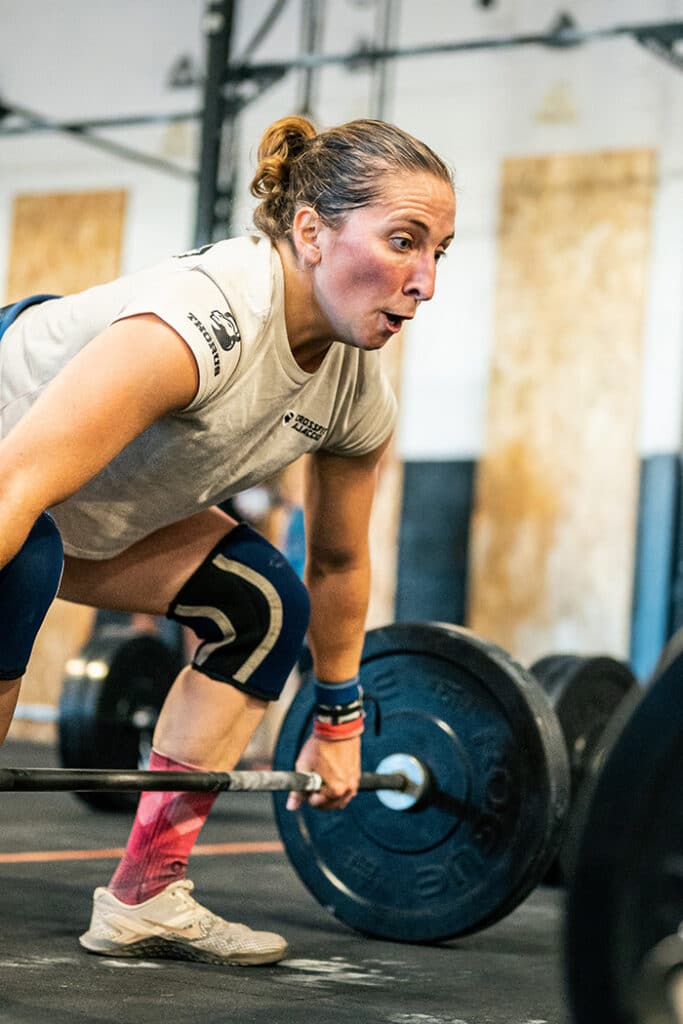
It’s not uncommon for lifters to stay around 50-60% of their deadlift 1 rep max for the first couple weeks until they begin to progress.
Why is the Snatch Grip Deadlift Harder?
The movement is harder because it demands:
- More upper back strength
- Better grip strength
- A longer range of motion
- That the lifter has more mobility in the hips, knees and ankles
Common Snatch Grip Deadlift Mistakes
Make sure you aren’t making any of these mistakes.
Lifting with a Poor Bar Path
The barbell should move in a completely vertical straight line. This is easier said than done and takes a great deal of practice to master.
Failing to keep the bar against your body at all times will result in an inefficient bar path. Making the exercise harder than it should be.
Letting the Hips Shoot Up Too Quickly
The main cause of this is generally that the hips were positioned too low in the initial set up.
This places too much weight behind the barbell and the body must adapt in order to lift the weight through the full range of motion.
Another sign of this is excessively bruised shins. When too much bodyweight is behind the barbell the bar often digs into the shins when the pull is started.
To get over this problem, keep your hips in the same position as soon as the shins touch the barbell in the set up.
Who Should do Snatch Grip Deadlifts?
The movement is useful for many different kinds of athletes.
For Functional Fitness Athletes
The movement will build back strength and pulling power for the Snatch, as well as general functional strength.
Deadlifting with a new kind of stimulus is a great way to challenge yourself, your body and learn new skills.
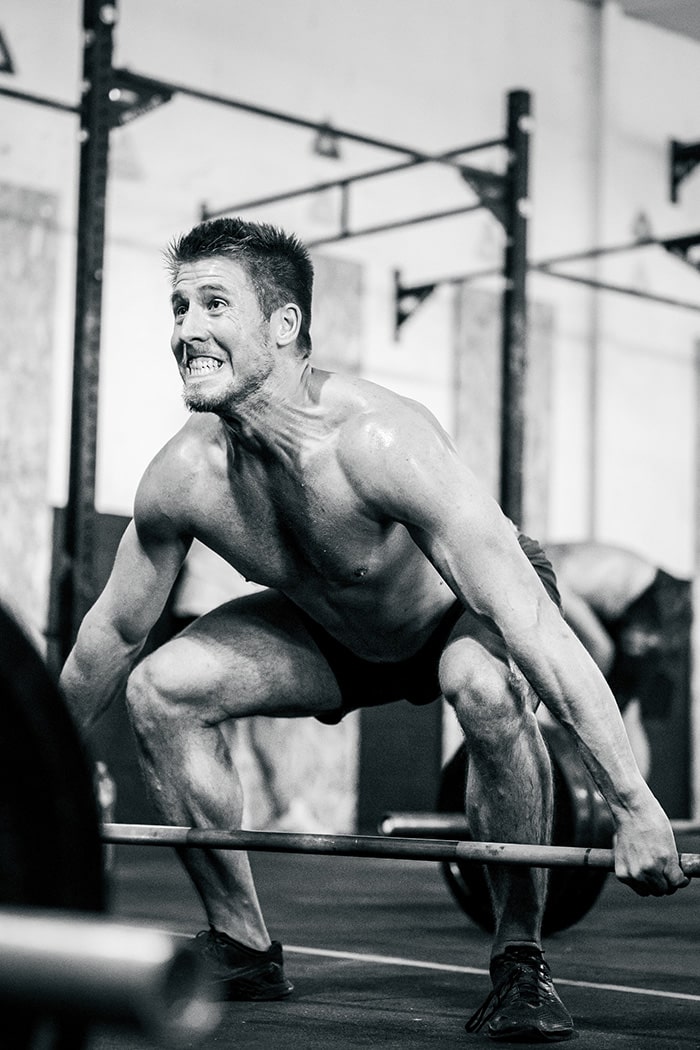
For Olympic Weightlifters
The movement is an excellent way to enhance strength and power in the first pull of the Snatch.
For Strength Athletes and Powerlifters
Use the exercise to enhance back grip and posterior chain.
It can also be an effective choice if you have hit training plateaus with the Deadlift and need to mix things up.
How to Program the Snatch Grip Deadlift
These different ways of programming the sets reps and rest periods will produce whatever results you are looking for.
Build Strength
Go for 3 – 6 sets of 3 – 5 reps with 75-90% of your 1 rep max.
Rest for 2 to 3 minutes between sets.
Hypertrophy
If you want to build muscle, aim for 4 – 5 sets of 8 – 12 reps.
Rest for no longer than 60 seconds between sets.
Snatch-Grip Deadlift Alternatives
Add these alternatives into your training if you can’t, or don’t want, to perform the original exercise for any reason.
Snatch Bent Over Row
This targets the lats and upper back muscles.
Snatch Pulls
These will help you develop more power.
Snatch Grip Romanian Deadlift
This will reinforce the proper back positioning and tax your lats and grip.
Snatch Grip Deadlift Variations
These variations will help to improve your technique, strength and skill for the lift and physical health in general.
Tempo Snatch Grip Deadlift
Perform this variation will a slower tempo, lifting for exactly three seconds for the ascent, and three seconds for the descent.
This will maximise time under tension and tax your grip.
2 Point Pause Snatch Grip Deadlift
With this variation you must pause just below the knees for a count of two seconds. And for a second time as well, just above the knees, for a further two seconds.
Deficit Snatch Grip Deadlift
This adds extra range of motion by lifting with a deficit.
This will make you even stronger when to return to lifting with a shorter range of motion.
It will also improve your power in the first pull.
FAQs
Got more questions? Scroll down to find the answers.
How Wide Should I Grip?
If you already Snatch then use the exact same grip.
If you have never performed this exercise before then adjust your grip so that the barbell rests across the hip crease (and not the thighs) when you stand up with the barbell gripped with both hands.
How Can I stop My Shins Getting Hurt?
Make sure to lock your hips in place as soon as your shins touch the bar during the set up.
Grazed shins are often caused by the hips dropping too low.
Should I do Touch-and-go or Dead Stop Reps?
Dead Stop reps are harder so you will get more benefit. You cannot use momentum to bounce the bar at all.
What Tempo should I Use During the Descent?
Take at least 2 seconds to slowly lower the bar if are working for hypertrophy as this will maximise time under tension.
It will also make it harder for your grip, which will result in a stronger grip over time.
Strength athletes can lower faster as the desired focus and reason for the lift is different.
Are Snatch Grip Deadlifts Better than Conventional Deadlifts?
No. You don’t want to completely replace Conventional Deadlifts with this variation.
Rather understand the inherent qualities of the latter and use it as a tool in your training where appropriate.
Should I use Straps?
If you want to specifically improve your grip strength then don’t use straps.
Otherwise, they can be helpful when you don’t want your grip to be the limiting factor.

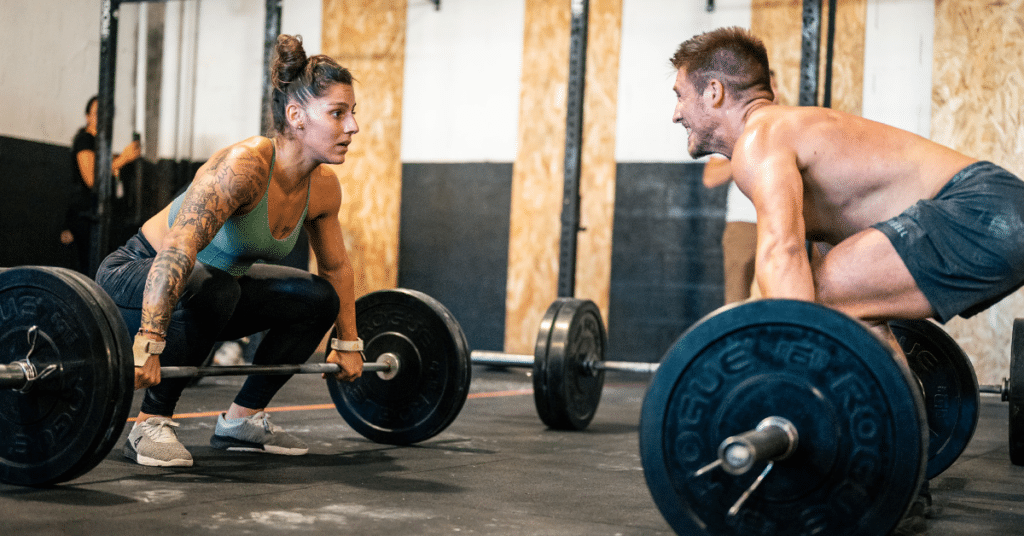
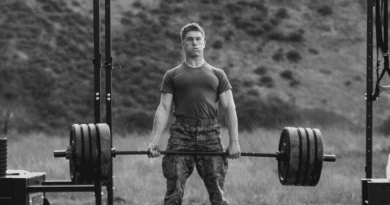
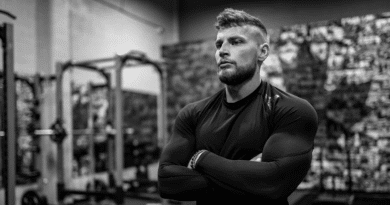

Pingback: Wall Ball Shots Workouts for Excellent Fitness - Outdoor Fitness Society